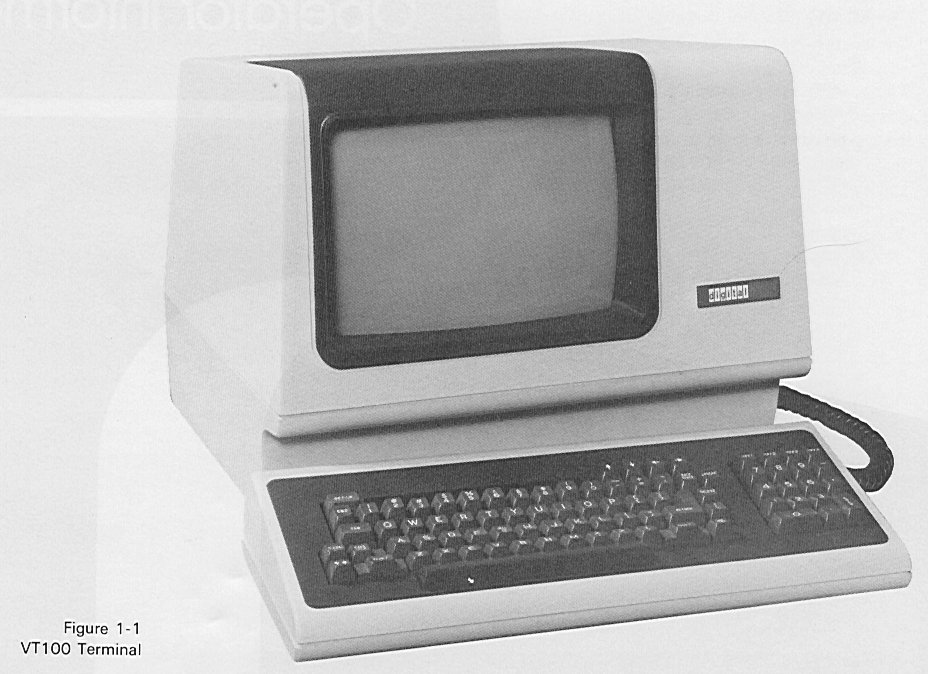The DEC VT100 Terminal

1978. The Digital Equipment Corporation VT100 was the first ANSI X3.64 compliant terminal and featured lots of innovations including control by an Intel 8085 microprocessor (rather than custom discrete logic), scrolling regions, different character sizes (regular, compressed, double-wide, double-high-and-wide), smooth scrolling, and on-screen keyboard-driven setup rather than the knobs, DIP switches, jumpers, or screws used by earlier CRTs, including DEC's own VT05, VT50, and VT52. Specs:
Construction: Monitor + detachable keyboard Display: 24x80 or 14x132 character cells, optional 24x132 Character matrix: 7x9 with descenders Screen size: 12" diagonal (8" x 4.5" active display) Character set: Complete US ASCII (128 codes) Keys: 65 keys in ANSI X4.14-1971 typewriter layout Auxilliary keypad: 18 keys (digits, arrows, function keys) Visual indicators: 7 LEDs Interface: RS-232/V.24, optional 20mA Current Loop Flow control: Xon/Xoff Communication Speeds: 75,110,150,300,600,1200,2400,4800,9600,19200 bps Dimensions: 14.5"x18"14.25" (monitor), 3.5"x18"x8" (keyboard) Minimum table depth: 20.25" Weight: 41 pounds
The VT100 is by all measures the industry-standard terminal. Even today, when few if any are still operational, all terminal emulation software is expected to emulate the VT100, and the VT100 is also the basis of the X-terminal (xterm) specification.
The VT100 was succeeded by the VT101, VT102, and various other VT1xx models. The VT101 added local echo capability and the VT102 added host-driven editing features such as character insert and delete, which made it much more pleasant to use with EMACS, especially at low speeds (dialups were only 300 or 1200 bps in those days). In the late 1970s and early 1980s, various desktop computers would be shipped in the VT100 case, such as the VT-180 "Robin" CP/M microcomputer, the DECmate I word processor, and the PDT-11 Micro PDP-11. Keyboard:
Note the absence of F (Function) keys. Many people expect VT100 terminal emulators to support F-keys, but as you can see, VT100s did not have them. although they did have four "PF" keys that can be used the same way, e.g. as F1 through F4, but there is nothing equivalent to F5 or higher.
The VT100 series was followed by the VT200, VT300, VT400, and VT500 series, which add F-keys, an editing keypad, character-set switching, character-cell line-and-box drawing and math, true graphics (ReGIS, Sixel, Tektronix), multiple sessions, and so on.
Also see: DEC Terminals (Richard Shuford).
Images: VT100 User Guide, Digital Equipment Corporation, EK-VT100-UG-001 (1978).
